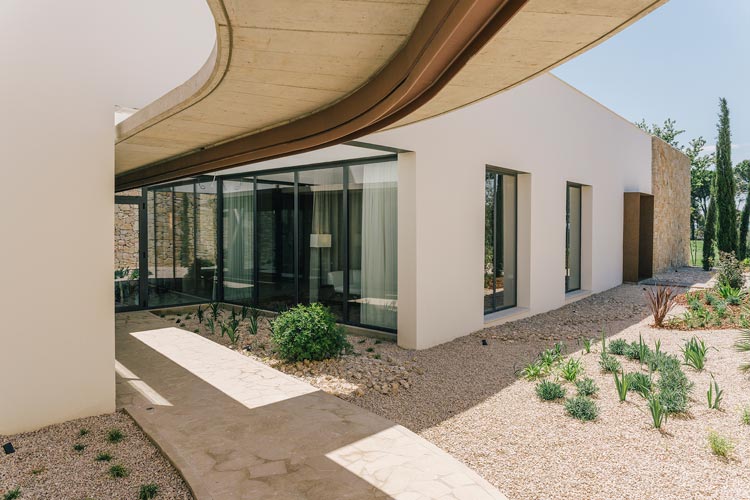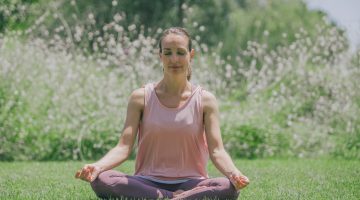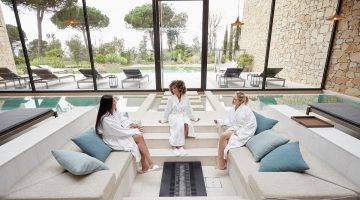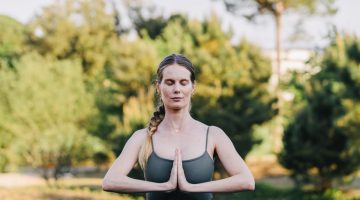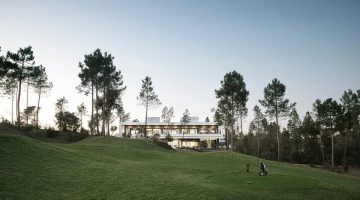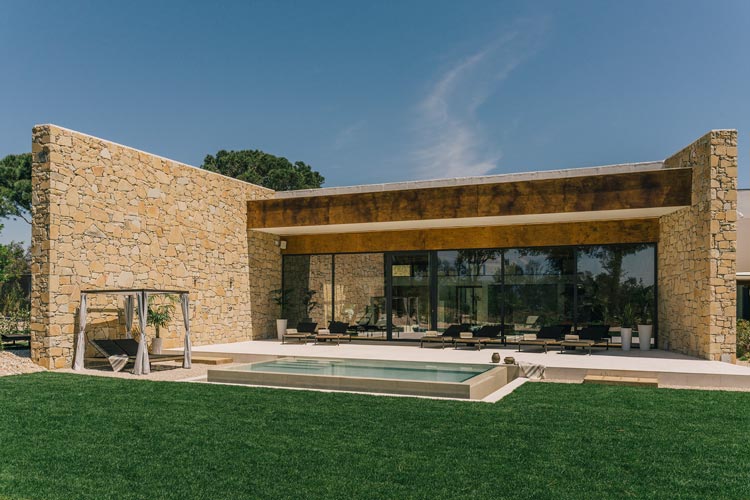
The new Wellness Centre at Camiral Golf and Wellness is a thing of beauty. We caught up with the architects, Lagula, to find out the story behind its design.
Describe the architectural concept of the Wellness Centre…
Charles Moore, possibly one of the most interesting landscape architects of the 20th Century, defined three categories within the Japanese landscape tradition: beautiful, picturesque and sublime.
‘Shibui’, he said, alludes to unaltered natural beauty. The quiet solitude in a natural setting would be suggested by the ‘wabi’. Finally, the ‘sabi’ is closely related to a certain rustic simplicity.
The project concept of the Wellness Centre is a dialogue between these three categories. We want people to enjoy the undisturbed distant landscape, the views over the Montseny and the Guilleries, and the feeling of privacy, protected in a pavilion in a garden.
What architectural aspects stand out?
The building is part of a landscape, of a garden, while blending in with the existing hotel. It has the curved geometry of the original project, its boundaries dissolving into the landscape thanks to materials and geometries typical of the area.
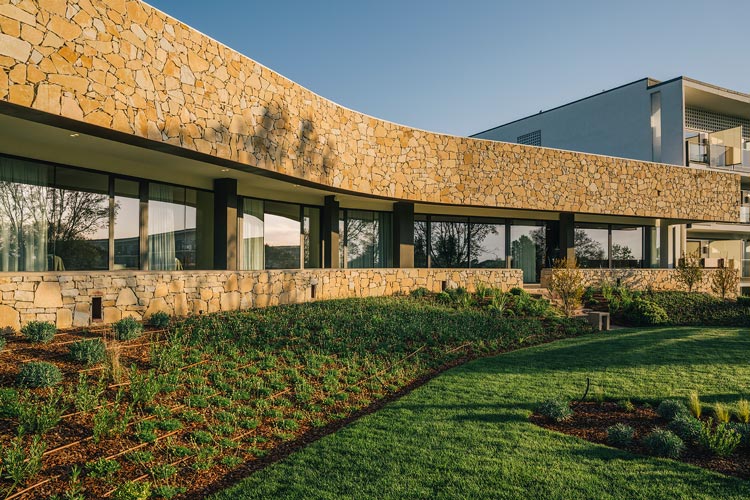
Describe the inspiration behind the design of the Wellness Centre?
In many ways, inspiration is always in nature. Exploring our Wellness Centre in Girona is like taking a walk through different spaces of a garden: some open land, other spaces like clearings in a forest, small corners next to a waterfall.
We had a vision that was centred on the individual, allowing them to get away from the stresses of urban life and reconnect with nature, giving them an ecological belonging.
We want to visitors to feel free of the pressures of their everyday life, to eliminate the pressure of now and to extend time. By connecting with nature, one can reset.
What materials and textures have been used?
The building blends into the environment with local materials. You will notice the solid and irregular stones of the ‘marges’, the traditional white swirls, the sandstone of the floors or the wood in the private areas. The materials, mostly zero-kilometer, merge with the irregular shadows of the pergolas, evoking the sensation of naturalness typical of the forest in the La Selva region.
Is there any space or element that you would highlight? Why?
The various corners of the building respond to the diversity of sensations of its occupants, seeking moments of greater or less intimacy, of relationship with the outside and distant views or of privacy, shelter and personal connection with nature.
In that sense, we would highlight two connected spaces, linked to the total personalization of treatments and personal healing processes.
The first is the sequence of access spaces to the thermal pavilion, the real heart of the building. The transition to the water area is done through a small garden protected by a wall, like a private Eden, in the process of accommodating the senses, matching the holistic wellness concept.
Like the pavilions of Japanese gardens, just a pergola and a minimal enclosure give you the feeling of being immersed in nature. When you enter, the thermal pavilion and the water area are revealed as a space of calm, of shibui, of contemplation in nature.
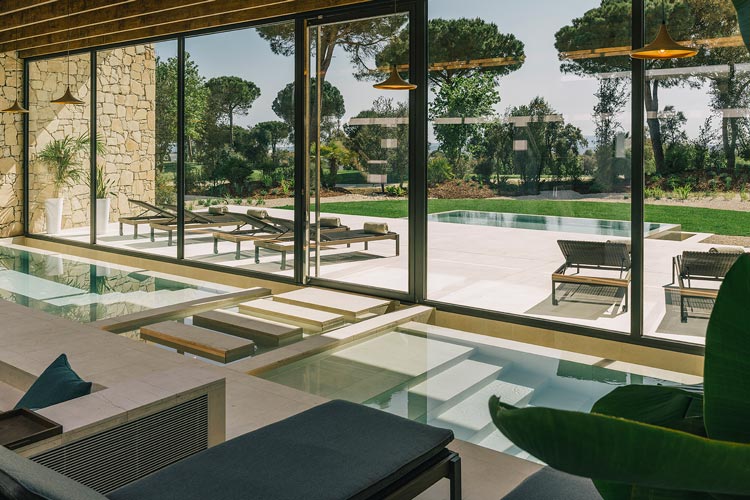
Were there any challenges during the project? If so, what?
There are always challenges. Social distancing and minimizing contact have made things more difficult.
The building was initially thought for personalized treatment from a holistic, comprehensive and linked to the territory vision. The new situation has caused technological solutions to be pushed to the limit, combined with other traditional ones, such as the revaluation of outdoor spaces, further diluting the boundary between nature and technology.
What is the area that you like the most in this space?
Among the various corners of the building, all of them intimate and special, there is one for which we feel a special affection: the meeting point between the two pavilions. In it, the logic of the building is perfectly understood. Its link with nature, its austere materiality, where the qualities of the ephemeral shadow of the various floors are mixed with the placid solidity of the stone, getting a fulfilling holistic wellbeing by giving the feeling of eternity in passing of time, like gazing at a toko-no-ma (a Japanese-style reception room) in the timeless palace of Katsura, Japan.
